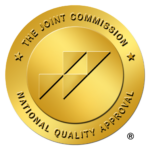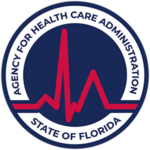Introduction to Clonidine
Clonidine is a commonly prescribed medication in healthcare that is used to manage various conditions. It works by reducing certain signals in the brain, which helps to lower blood pressure and relieve symptoms of other disorders.
What is Clonidine?
Clonidine belongs to a group of medications called alpha-2 adrenergic agonists. It works by stimulating specific receptors in the brain, which then reduces nerve impulses that can cause blood vessels to tighten. This action results in a more relaxed vascular system and ultimately, a decrease in blood pressure.
The Role of Clonidine in Healthcare
Clonidine is an important medication that serves multiple purposes in the field of healthcare:
- Blood Pressure Management: It is a key treatment option for hypertension.
- Attention Deficit Hyperactivity Disorder (ADHD): Clonidine helps manage symptoms of ADHD in both children and adults.
- Substance Withdrawal: Clonidine provides relief during the substance withdrawal process from opioids, alcohol, and nicotine.
- Off-Label Uses: Clonidine addresses pain, menopausal flushing, and certain gastrointestinal issues.
- Milton Recovery, known for its compassionate approach to mental health and substance use recovery, frequently incorporates Clonidine into its comprehensive treatment plans.
- This highlights the significant role of this medication in promoting overall well-being and supporting individuals on their journey to recovery.
How Does Clonidine Work?
Mechanism of Action of Clonidine
Clonidine works by stimulating alpha-2 receptors in the brain. These receptors are part of the central nervous system and play a crucial role in regulating blood pressure and overall sympathetic nervous activity.
Stimulation of Alpha-2 Receptors in the Brain
When Clonidine binds to alpha-2 receptors, it triggers a series of reactions that lead to the inhibition of norepinephrine release. This neurotransmitter is usually responsible for activating the fight-or-flight response, which includes increasing heart rate and constricting blood vessels.
Decreasing Sympathetic Outflow
By reducing norepinephrine levels, Clonidine decreases sympathetic outflow, which means less signaling to the heart and blood vessels to increase their activity. This calming effect on the sympathetic nervous system helps to bring about a state of relaxation and reduced physical stress.
Lowering Blood Pressure
As a direct result of diminished sympathetic outflow, blood pressure is lowered. The heart doesn’t pump as forcefully, and blood vessels remain more relaxed and dilated. As expected, this makes Clonidine particularly effective for patients dealing with hypertension or high blood pressure issues.
Understanding these mechanisms offers valuable insight into why Clonidine is utilized not just for controlling blood pressure but also for managing other conditions influenced by sympathetic nervous system activity.
Different Forms of Clonidine Medications
Clonidine comes in different forms to meet various needs and preferences. These options make sure that patients get the most suitable and effective treatment.
Oral Tablets
Oral tablets are a common and convenient form of Clonidine. Taken once or twice a day, depending on the prescribed dosage. Therefore, patients often find this method simple and easy to include in their daily routines.
Extended-Release Tablets
For those who need long-lasting effects, extended-release tablets are a good choice. Designed to slowly release over a long period, typically 24 hours. This steady release helps keep blood pressure levels stable throughout the day and night.
Skin Patches
Skin patches offer a new and convenient way to use Clonidine. Applied directly to the skin, these patches deliver a constant amount of medication over several days, usually up to a week. This method can be especially helpful for people who might struggle to remember taking their medication regularly.
Less Common Options: Injections
Although not as commonly used, injections are another way to administer the medication.
However, each form of Clonidine has its own advantages that cater to different therapeutic needs, ensuring the best possible care and flexibility for patients.
Understanding the Uses of Clonidine in Medical Treatments
Comprehensive Guide to Treating High Blood Pressure
Clonidine is recognized for management of high blood pressure. By stimulating alpha-2 receptors in the brain, it effectively reduces sympathetic outflow. This leads to a decrease in heart rate and dilation of blood vessels, resulting in lower blood pressure. Patients often find relief with clonidine when other antihypertensive medications are insufficient or cause adverse effects.
The Role of Clonidine in Managing ADHD Symptoms
Children and adults with Attention Deficit Hyperactivity Disorder (ADHD) can benefit from clonidine’s calming effects. Unlike stimulant medications, clonidine helps reduce hyperactivity and impulsiveness without causing jitteriness or sleep disturbances. Therefore, it can be particularly beneficial for individuals who experience tics or anxiety as side effects of stimulant medications.
Assisting in Drug Withdrawal Processes through Clonidine Therapy
Clonidine has shown promise in easing the symptoms associated with withdrawal from opioids, alcohol, and nicotine. By decreasing the excessive release of norepinephrine, it helps alleviate withdrawal symptoms such as anxiety, agitation, sweating, and muscle aches. Therefore, clonidine makes the detoxification process more manageable and less distressing for individuals seeking relief from substance withdrawal.
Off-Label Uses: Clonidine for Pain Conditions, Menopausal Flushing, Diarrhea, and Spasticity
Beyond its primary indications, clonidine finds application in several off-label uses that enhance patient quality of life:
- Pain Conditions: Clonidine can provide relief for certain pain conditions by modulating pain signals in the central nervous system.
- Menopausal Flushing: For women experiencing hot flashes during menopause, clonidine offers an alternative treatment option when hormone replacement therapy is not suitable.
- Diarrhea: In cases of severe diarrhea caused by diabetic neuropathy or other medical conditions, clonidine can help manage symptoms by reducing bowel motility.
- Spasticity: Patients with spasticity due to spinal cord injuries or neurological disorders may find relief through clonidine’s muscle-relaxing properties.
Each of these uses highlights the versatility of clonidine in addressing diverse medical needs beyond its traditional roles.
Potential Side Effects and Drug Interactions of Clonidine
Commonly Reported Side Effects and Their Management
Clonidine, like any medication, may come with its share of side effects. These are commonly experienced by patients and are managed with simple adjustments or supportive care.
Common side effects include:
- Dry mouth: Alleviated by sipping water regularly, chewing sugar-free gum, or using saliva substitutes.
- Drowsiness: It is advisable to avoid activities that require alertness, such as driving, until you know how it affects you.
- Constipation: Increasing fiber intake and staying hydrated can help mitigate this effect.
- Dizziness: Standing up slowly from a sitting or lying position can reduce the risk of dizziness.
Identifying Serious Side Effects Requiring Immediate Medical Attention
While many side effects are mild and manageable, certain symptoms warrant immediate medical attention. However, being aware of these serious side effects ensures timely intervention and safety.
Serious side effects include:
- Severe hypotension (low blood pressure): Symptoms may include fainting or extreme dizziness.
- Bradycardia (slow heart rate): Unusually slow heartbeat or palpitations should be reported immediately.
- Severe allergic reactions: Signs such as rash, itching/swelling (especially of the face/tongue/throat), severe dizziness, or trouble breathing require urgent care.
Notable Drug Interactions with Clonidine That Should Be Avoided
Understanding potential drug interactions is crucial for anyone taking Clonidine. Certain medications can influence the effectiveness or amplify its side effects.
Key drug interactions to be aware of:
- Antihypertensives: Combining Clonidine with other blood pressure-lowering drugs can result in excessive hypotension. Close monitoring by a healthcare provider is essential.
- Beta-blockers: If used together, sudden discontinuation of either drug can lead to significant increases in blood pressure. Tapering off under medical supervision is recommended.
- Tricyclic antidepressants (TCAs): These may reduce the efficacy of Clonidine in controlling blood pressure.
- CNS depressants: Alcohol, benzodiazepines, and opioids can enhance the sedative effects, leading to increased drowsiness or respiratory depression.
Discussing your complete medication list with your healthcare provider helps prevent unwanted interactions and ensures safe use of Clonidine.
Conclusion
Clonidine is an important medication in healthcare with a wide range of uses. It works by stimulating alpha-2 receptors in the brain, which helps to reduce sympathetic outflow and lower blood pressure.
Key Points Recap:
- Mechanism of Action: Clonidine’s effectiveness in lowering blood pressure comes from how it interacts with alpha-2 receptors.
- Forms: Clonidine is available in different forms such as oral tablets, extended-release versions, skin patches, and sometimes injections.
- Medical Uses: Clonidine is used for various medical purposes including treating high blood pressure, managing ADHD symptoms, aiding in drug withdrawal programs, and providing off-label benefits for conditions like pain, menopausal flushing, diarrhea, and spasticity.
- Precautions: It’s important to be aware of possible side effects and interactions.
Each person’s experience with Clonidine is unique. Taking a calm and knowledgeable approach to treatment can be empowering. Working closely with a healthcare professional will ensure that therapy is tailored to your specific needs and circumstances. Your well-being deserves the support of caring experts who have a deep understanding of this complex medication.







13 thoughts on “Clonidine”
This sounds like a very interesting drug. I’m always fascinated by how much a single drug can help people.
This is pretty amazing. One pill can help so many people with so many different issues. Modern medicine is amazing.
I had no idea that one receptor in the brain could be responsible for so much. No wonder this is such a multi-use drug.
Medications can often be confusing, so I appreciate the clarity this article provides on Clonidine. The detailed information makes understanding its uses and effects much easier.
The option of a patch that lasts a week is a game-changer for folks like me who can’t even remember where they put their keys two minutes ago, let alone take daily meds. The only way it could get more convenient is if it came with a personal reminder email!
I had no idea about this medicine until I read this article.
My parents have hypertension and I need to consult their Doctors about this medicine.
Oh wow, this is a game-changer for hypertensive patients. I love the idea of using the patch for those who may forget occasionally!
I also wasn’t aware of the clonidine patch. Clonidine has been around for a long time, but it provides so many benefits especially if you’re not taking other drugs that could interact with it.
You’ve made the process of managing withdrawal so much clearer. Your tips are really helpful!
Many people report feeling relief and stability during what can otherwise be an overwhelming process. Just follow the doctor’s advice.
I wonder how this affects the person taking it. My cousin had to take Ridolin for ADHD when he was a kid. He would go off of it every once in a while, and then let my aunt know he really needed it. Apparently He could focus his thoughts better when he was in it.
This is interesting, first time to know about clonidine and how it works. It does have good benefits for our bodies.
I didn’t now anything about Clonidine before until now reading this informative post. No wonder people often rely on meds/drugs, they work good at what t hey are intended.